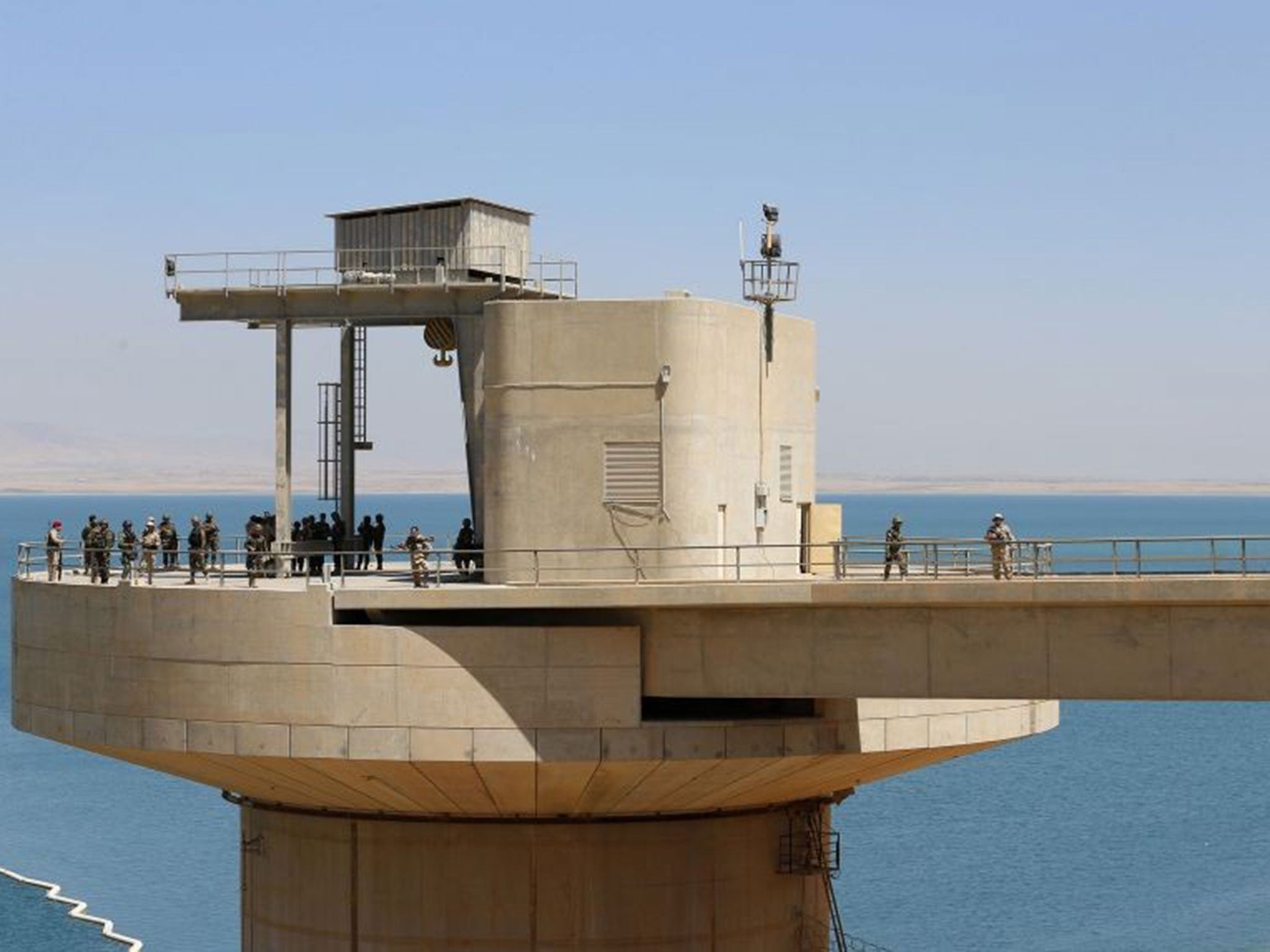Iraq's Mosul Dam could collapse at any minute 'killing a million people'
Dam’s former chief engineer says it might not survive the coming floods

Iraq's biggest dam could collapse without warning and kill up to a million people, the engineers involved in building it have urgently warned.
There are grave concerns the dam could collapse in the near future as winter snow melt puts the already impaired structure under even greater strain.
“The dam is in a very dangerous situation now,” Dr Nasrat Adamo, the dam's former chief engineer, told the Independent.
“The coming floods in March and April will definitely raise the water to alarming levels, increasing the dangers and making the dam more unstable.
“My feeling is the dam will fail sometime in the future, but whether this will happen tomorrow or next month, or maybe after one year no one can tell as we do not know exactly the amount of damage in the foundation.”
The dam, previously known as the Saddam Dam, is located on the Tigris River and is the largest in Iraq.
There are believed to be between 500,000 and 1.5 million Iraqis living in the areas which would be at highest risk should the dam collapse, while 6 million residents could be affected by the floodwaters.
Dr Adamo said: “One way to reduce the rate of the dissolution processes and reduce the danger of dam collapsing is to lower the level of water in the reservoir to the lowest possible level.
“This is not possible at the moment as the gate to the bottom outlet intended for lowering the reservoir level has been out of order since 2013. No attempt was made to repair it.”
Dr Adamo previously claimed the dam "should never have been built" and has described it as a "nightmare".
He says the dam is in such a state now as it was built on a foundation which is soluble in water.
In the planning stages it was believed the foundations could be sealed by injecting a mixture of cement and bentonite into them, a procedure known as grouting.
However, Dr Adamo says that this proved very difficult during construction and there was no alternative but to do maintenance grouting throughout the past 30 years.
More than 95,000 tonnes of material were injected into the foundations from 1986 until the Isis occupation of the dam in August 2014.
The grouting work halted under Isis as “they looted and destroyed most of the grouting machinery” and because much of the workforce fled the area, Dr Adamo explained.
“The government should do everything possible to resume the intensive grouting operations, and the bottom outlet gate must repaired as soon as possible.”
Dr Adamo admitted he does not know whether the dam can be saved as the exact amount of damage is unknown.
He believes the government should expect the worst and have a complete emergency action plan which should prepare for evacuation of the population and a “massive” relief effort.
His concerns echo those of the US Embassy of Baghdad, who issued a statement on Sunday amid “fears the dam faces a serious and unprecedented risk of catastrophic failure with little warning”.
The embassy is said to be working in partnership with the Iraqi government’s ‘early warning and public information efforts’ regarding the structure and have called for a “prompt evacuation” of those most at risk.
Join our commenting forum
Join thought-provoking conversations, follow other Independent readers and see their replies
Comments